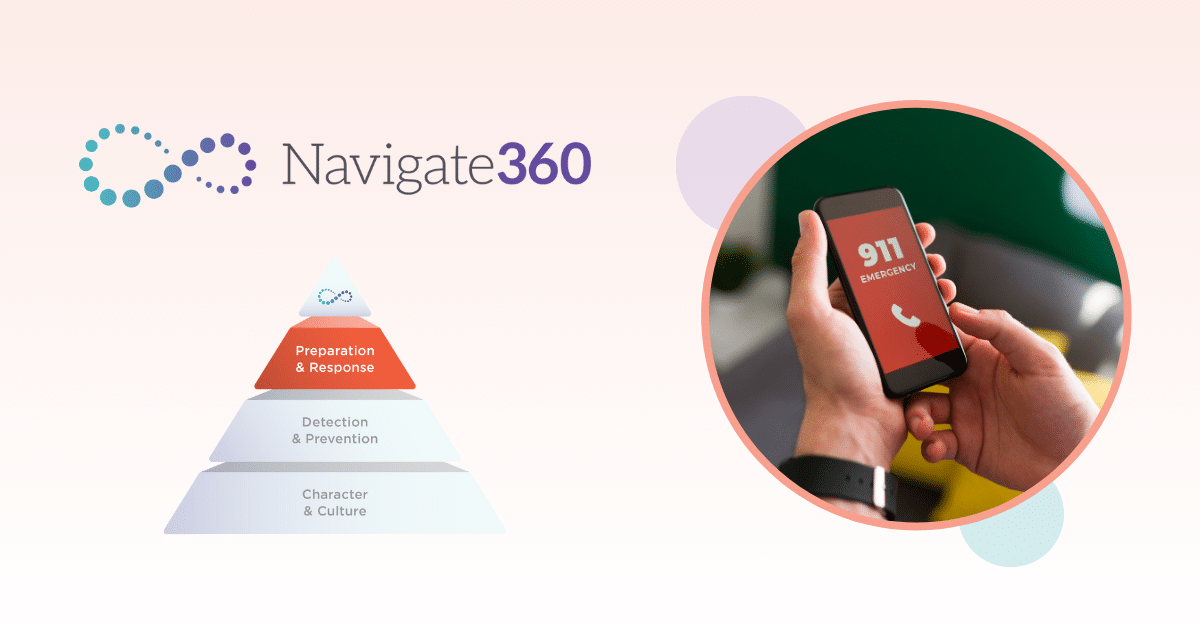Have a Wellness Plan in Place for Before, During After School Safety Drills
Being involved in a traumatic event such as a school shooting changes the body and brain on a cellular level. Thoughts, feelings and behaviors may look different from what they were like before the event, and while this is normal, it can be confusing and scary to experience.
People often associate significant trauma responses with certain events or the size of a tragedy, but trauma responses are not merely a reflection of what happened or how severe the event was. Trauma responses have a lot to do with the aftermath of the event. If someone who experiences a traumatic event can access resources and support to help them feel safe, they’re less likely to experience a significant traumatic response.
Ways to Cope with Grief After Community Violence
After surviving or witnessing a traumatic event, it’s like for survivors to experience a range of emotions, from grief to depression to anger. While these reactions are common, it doesn’t mean they should be ignored or that survivors should suffer in silence.
Ways to Cope with Grief After Community Violence
After surviving or witnessing a traumatic event, it’s like for survivors to experience a range of emotions, from grief to depression to anger. While these reactions are common, it doesn’t mean they should be ignored or that survivors should suffer in silence.
School Safety Training Shouldn’t Compound Trauma
Returning to a sense of safety in your schools is the number one priority. Part of ensuring that safety is planning for and practicing drills to respond to emergencies. Unfortunately, this can bring up a lot of intense thoughts, feelings and sensations related to trauma. Knowing this, preparing for this and caring for those in attendance through this process is important so that re-traumatization doesn’t occur.
Teachers can understand on a cognitive level that a drill is just a drill, but the body and the parts of the brain that have stored the trauma do not know that. Participating in a drill means being exposed to certain sensory stimuli that can bring the brain and body right back to the event and make it seem like it’s happening again. Having a before, during and after plan for dealing with these responses to the drill is very helpful.
Steps You Can Take to Protect Your Emotional Wellbeing During Drills
Safety drills are key to increasing your school community’s knowledge of how to respond to an emergency or violence. They help prepare educators to respond quickly, calmly, confidently and safely should an actual critical incident take place. You can utilize the following suggestions to stay safe and healthy throughout required drills.
What You Can Do Before a Drill
Make sure that you are rested, hydrated and nourished. This will allow you to have the mental and physical energy you need to handle the stress of the drill.
Have a plan for coping. You know yourself best and you know what works for you, but make sure that you have what you need to use those coping strategies.
- Is there another familiar and trusted adult in the building that can be with you and your class during the drill?
- Will you need to use certain sensory tools during the drill such as mints, essential oils, something to fidget with or a picture/positive affirmation/mantra/quote that brings you peace? Make sure to have those items ready.
- Prepare by practicing breathing and/or grounding techniques while you are feeling calm so that you can use them during the drill. Try to have a few different strategies planned to fall back on in case one doesn’t work.
Reach out and talk to supporters. If you’re feeling anxious or overwhelmed about an upcoming drill, don’t ignore those feelings. Talk to family, friends, colleagues or mentors about your thoughts and feelings. Sometimes just voicing your worries and getting validation from others is helpful. If you have a therapist or other professional that you work with, process your thoughts and feelings with them as well.
Visualize yourself going through the drill. This might be hard, but it’s worth it. Imagine yourself going through the drill in detail. Think about each step of the drill and what that will look like. Work on breathing evenly and using positive self-talk as you walk yourself through the process of the drill. You can even pause the visualization to practice coping strategies to bring yourself back to a calm place throughout.
Journal. Write out anything that’s on your mind before the drill, or use these prompts:
- What are you most worried about?
- What do you hope will happen during the drill?
- What will it look like to go through this drill successfully?
- What advice would you give a friend or colleague going through this drill?
- What do you anticipate will happen during the drill?
What You Can Do During a Drill
Breathe. Try counting as you breathe. Inhale for a count of 4 and exhale for a count of 4. The more you focus on your breathing, the calmer you’ll feel.
Stay grounded. Use the 5, 4, 3, 2, 1 grounding method. Think of 5 things you can see, 4 things you can touch, 3 things you can hear, 2 things you can smell and 1 thing you can taste.
Use your coping strategies that you planned before the drill.
Use positive self-talk. Repeat phrases that are calming and compassionate.
- I am safe.
- I am strong.
- I will get through this.
- This feeling is temporary.
- I am going to be okay.
- Nothing/nobody is going to hurt me.
Use self-soothing strategies such as twiddling with a fidget ring, smelling essential oils (you can keep a tiny bottle of a soothing scent in your pocket or in a bag that you carry) or chewing gum or sucking on a mint or hard candy.
What You Can Do After a Drill, Individually
Self-care is a must. Self-care is different for everyone, and it’s important that you do what feels right for you. Some examples include:
- Rest. Try not to have anything scheduled for after school and allow yourself to take the night off from cooking, cleaning or doing extra work when you get home.
- Exercise. Some people find that they can’t rest and that they need movement. Go for a walk, run or hike. Do some strength training or yoga. Play a sport or ride a bike. If your body feels restless, listen to that feeling and move your body.
- Follow your regular routine. Some people find comfort in the familiar, and sticking with your regular schedule might be what you need.
- Feel your feelings. There’s no right way to feel after the stress of a drill. You might feel anxious, angry, depressed, exhausted, scared, on edge, out of control, sad or ashamed, or you might feel nothing. All of it is okay and all of it is valid. Even though your feelings might be painful or uncomfortable, allow yourself to feel them. Remember, “Feeling is healing.”
- Connect with others. Visit family or friends or call them on the phone. Have a movie night with your kids or significant other. Snuggle with your pets. Being around others can be a great distraction and can help you stay more grounded.
- Express yourself. Write, draw, paint, color, dance or sing. Artistic expression can be a great outlet.
- Distract yourself. If you are in significant distress after the drill, you might need to disconnect for a bit. Watch your favorite TV show, go shopping, paint your nails, cook or bake, look up funny videos to watch, or chat with a friend. Do something that will occupy your mind until you are ready to process your thoughts and feelings.
What You Can Do After a Drill, Collectively
Check in with each other. If you’re in a place to offer support to others, it will not only be good for the other people you reach out to; it will be good for you to be able to do something helpful as well.
Debrief as a school, grade level or team. Come together after the drill and discuss how it went. It’s important to ensure that the group has set norms and expectations so that everyone can feel safe to share openly. Some common norms are:
- What is said stays within the group.
- Withhold judgement and use “I” statements.
- Allow everyone’s voice to be heard.
- If someone is not comfortable sharing, they can pass.
- Consider the following questions to reflect on as a group:
- What 3 words best capture your feelings about this drill?
- What went well?
- What was the hardest part?
- What surprised you? What do you wish went differently?
- What questions or concerns do you have going forward?
- What would you like to see happen next time?
- What can you do for self-care this afternoon?
Have after-hours support for those who are struggling after the drill. After school, open a space such as the library, cafeteria or a conference room where staff can come to give and receive support. There should be personnel who are qualified to offer emotional support and coping strategies as well as calming/soothing activities for those who don’t want to talk. Some options to offer during this time are:
- Printed mandalas to color
- Guided meditation
- Snacks, water and tea
- Guided progressive muscle relaxation
- Puzzles
- Gentle yoga
Approaching School Safety Drills with a Trauma-Informed Plan
Learn how you can take action to support students through a school safety drill and prevent re-traumatization.
Holistic Safety Takes a Whole Community
True mental and emotional wellness after trauma is complicated, but you are not alone. As a trusted school safety partner, we know that it takes a community of support to build a culture and safety on school campuses.
With an ecosystem of holistic safety and wellness in place, K-12 schools are in a better position to promote the long-term success of educators. Contact us today to learn more about the steps you can take to support the mental and physical wellbeing of both staff and students.




